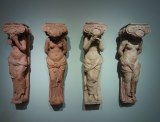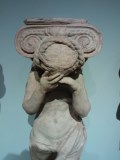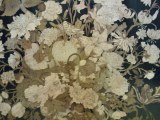The Rijksmuseum
Yesterday I was invited for a preview of the recently revamped Rijksmuseum. Walked from one Pierre Cuypers building, Central Station which is also undergoing extensive work, to the other in a welcome April drizzle. It, the museum, looks strangely new. The surfaces have been spruced up, the pointing has been redone with affection and skill. Everything shines with care and joy. The crispness of the volumes dressed in auburn brick, the curious flatness of the walls and the celebration of names in gold and symbol, I walked around the building and into the central passage from the Museumplein side as the main front was still blocked, and was welcomed by a string of gorgeous young women in an elegant black uniform greeting me with eager smiles. And so I entered, like a king. The two courtyards either side of the bicycle passage have been roofed over. They have now been joined into one subterranean court over which the bicycle passage crosses like a viaduct. It will be lovely seeing it at work, with cyclists happily trundling along trying to avoid the spilling queues of patiently waiting tourists outside, particularly from the raised terrace on the South-Eastern Courtyard where people can sit and drink their stuff and survey the full and fully layered space of the two courtyards. The Spanish architects have done a great job. They have put their architecture at the service of the museum, and done so with a delight for detail and a sense for spatial complexity-made-intuitive. The Portuguese travertine has been gorgeously cut and polished and, in the north-western courtyard folded into a kind of triumphal portal of a rather severe geometry, contrasting with the catholic chattiness of Cuyper’s work. The whole is a delightful play with height, proportion and the game of looking and hearing. The empty voids in the glass-covered courtyards are each filled with an acoustic hanging, (I am not quite sure what to call it) which, considering the hard surfaces in the courtyard, must be very necessary. And then, as you enter the wings wrapped round the two courtyards in the figure of an eight housing the collections, the architects fade well into the background and a splendid show unfolds as the paintings, objets d’art and other useful things of the time, take centre stage in a series of segmented spaces. Each room or segment give a full and intelligent image of the time or theme, without ever forgetting the museum’s first purpose, namely to show what man is capable of in terms of making his environment live with beauty and wonderfulness. I wandered through room after room, inspecting watches, guns, porcelain, carved antlers, pictures, drawings, an aeroplane, chess-sets and above all gorgeous Van Mekeren cabinets. Van Mekeren is my hero together with all the others. He is furniture’s equivalent to the best in painting. In the special collections room, the transparency of the showcases and the objects hanging or positioned so carefully created an almost magical space, an Aladdin’s cave of improbable suspension. The gallery of honour, now fully restored has become a surreal confrontation of truly great paintings set in a strange unworldly architecture full of pale colouring, carefully carved ornament and pedagoguery. The Night Watch, the Jewish Bride as a study in gentleness and silence, the Vermeers who transcend every possible description and Jan Asselijn’s fiery Swan, one friend after the other reappearing before me after years of absence. And everybody around me, talking busily, pointing at this or that and making suitable noises. I also greatly enjoyed the eighteenth and nineteenth century galleries with van Ekels, Liotard, Witsen, Breitner, you name it, what a feast! And again a great and curious Ceasar van Everdingen, a lady with a great hat.


